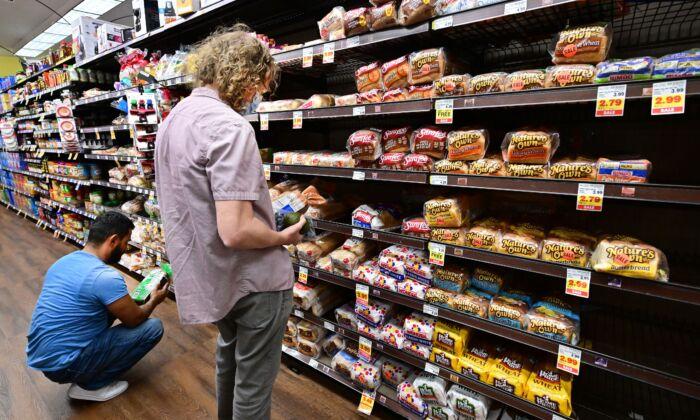U.S. consumer spending stalled in May to the lowest growth rate this year as inflation remained elevated.
The stalling consumer spending comes as inflation remains high. The 12-month Consumer Price Index (CPI), a measure of annual inflation, came in at 4 percent in May. Inflation has remained at or above 4 percent for 25 months since April 2021.
The 4 percent inflation in May is double the Federal Reserve’s target rate of 2 percent annual inflation. During inflationary periods, the purchasing power of money declines. As a result, consumers’ spending habits can change, with people choosing to spend less.
In dollar terms, PCE rose by $18.9 billion in May. This included a $52 billion increase in services and a $33.1 billion decrease in spending on goods.
Interest Rates Impact
Consumer spending is also affected by interest rates. Since March 2022, the Federal Reserve has bumped up its benchmark interest rates by 5 percentage points at 10 consecutive policy meetings in a bid to rein in inflation.Consequently, the central bank’s interest rate currently sits in a range of 5 percent to 5.25 percent, the highest since 2007.
Cautious Consumer Spending
According to a June 22 post by McKinsey, though more consumers are feeling optimistic about the U.S. economy, they’re still spending “more cautiously.” McKinsey’s research showed that “across all age and income groups, consumer spending is lower than it was a year ago.”“Real spending declined for the first time in more than two years. In March 2023, real spending fell 0.7 percent versus a year ago. The country has thus far avoided a recession, but consumers are being more financially cautious, especially in an inflationary environment where they’re not getting as much bang for their buck,” it said.
The price increases have forced most customers to look for better value for their money, including trading down, which refers to consumer behavior involving switching from an expensive or large-volume item to a cheaper or low-volume item.





